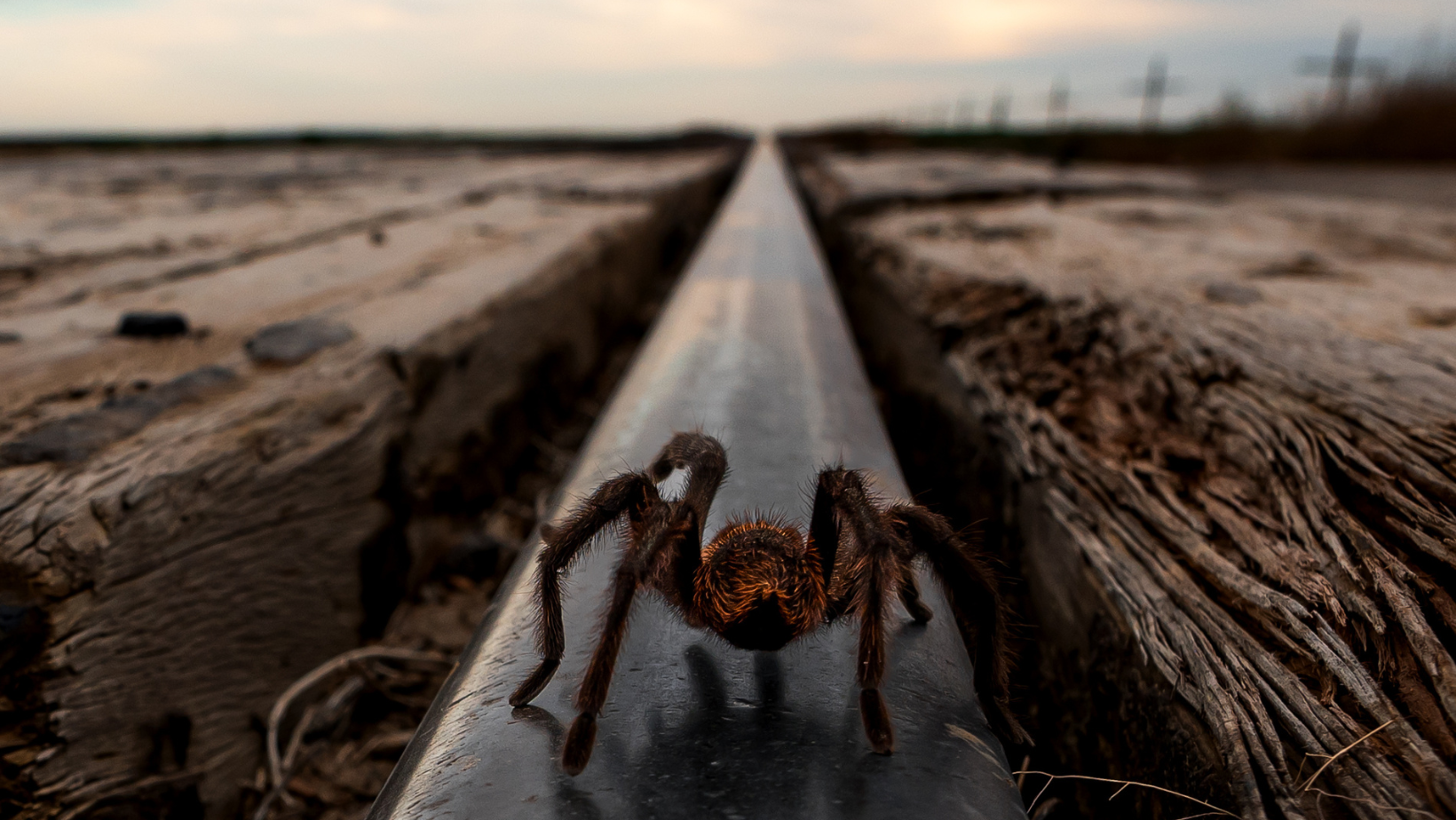
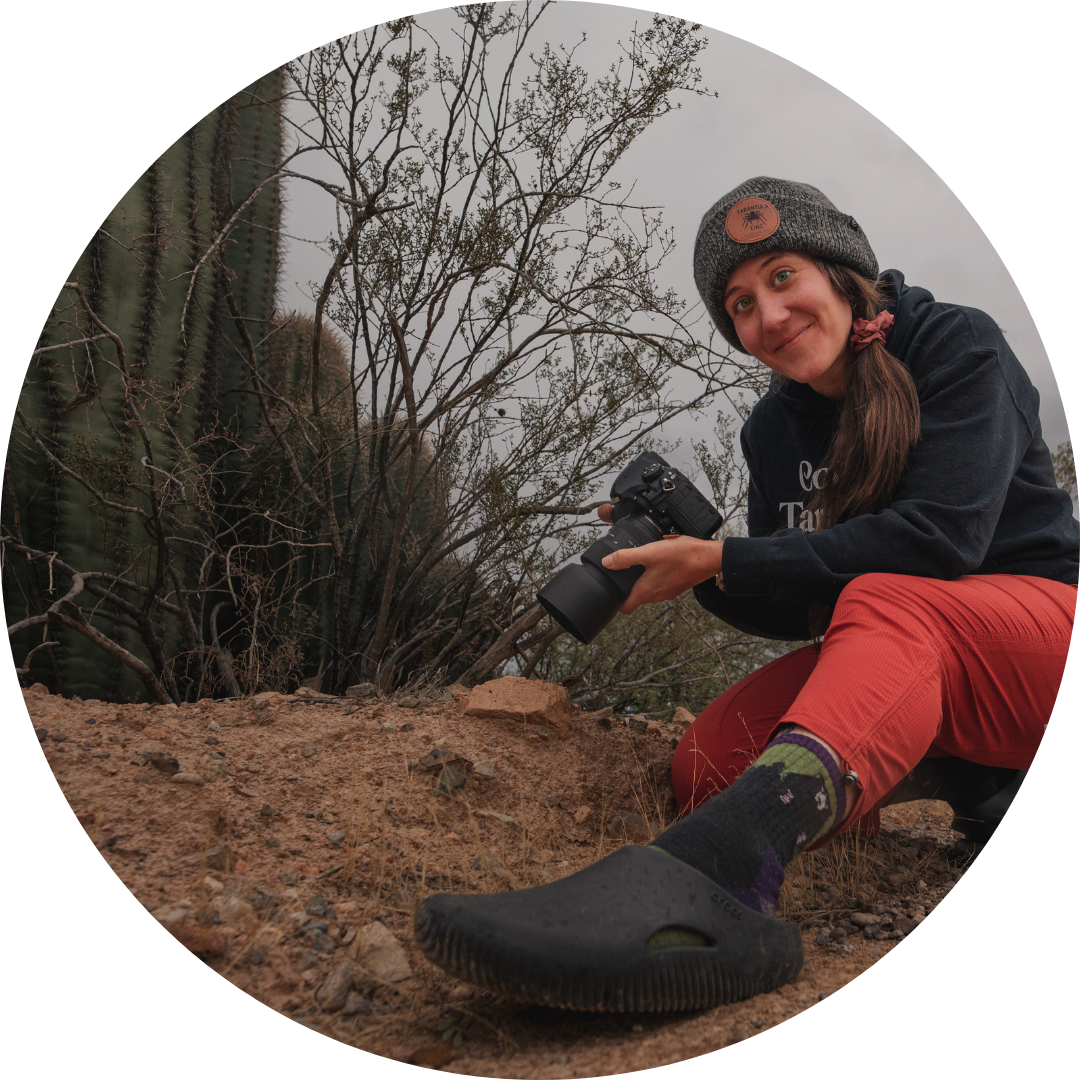
Author: Deirdre Denali Rosenberg, Conservation Photographer and Outdoor Writer
Deirdre Denali Rosenberg is a photographer and writer living in Southern Arizona. Photography, writing, wildlife, and the rugged outdoors have always been her passions. She is also an enthusiast of various mountain sports, holding credentials to lead trips and guide. With nearly three decades of wilderness experience, Deirdre is a confident outdoorswoman. She is also a Nature First photographer and a member of the North American Nature Photography Association. Learn more about her at her website here.
On a chilly September morning, one of the first of the season, I sat alone on my patio. Coffee cup in hand. Quietly battling another panic attack.
The previous few months had been bleak; so much loss. So much despair. These feelings are a part of the human condition, but somehow when we experience them we can feel so deeply alone.
As I took a breath, I closed my eyes, trying to soothe my frantic heart. I exhaled and opened my eyes, noticing a slight movement several feet in front of me. I focused on the movement and much to my surprise, I was looking at a big black tarantula.
Bewildered, I felt no fear. Only curiosity. I had never seen a tarantula before and I certainly didn’t expect them to live on my property up on the Colorado Plateau. I carefully stood up and went inside to grab my camera. And when I returned, the tarantula was still there. Wandering about, but in no rush. I began to snap off some photos, noticing orange hairs on this black spider. Noticing little eyes, little paws, fuzzy features. I became entranced by this bizarre arachnid and without realizing it, my heartbeat slowed. My breathing became steady. Relief came with eight legs that morning.
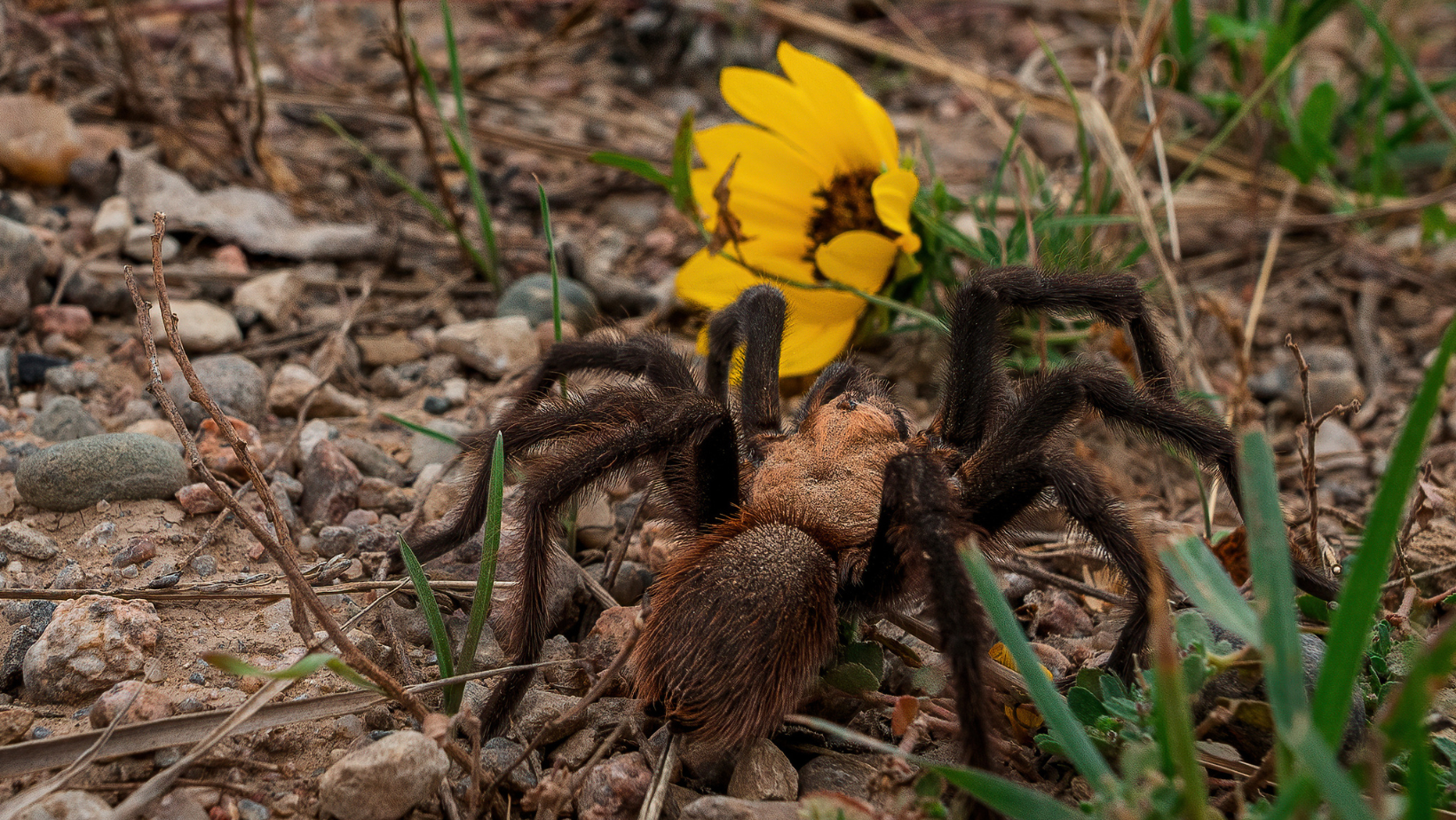
Aphonopelma marxi, or the Grand Canyon black tarantula, is a species of tarantula endemic to the Four Corners region of the southwest. Over the next couple of months, now aware of their presence, I would find many as their annual mating season was in full swing.
Like many animal lovers, my curiosity led me down the path of researching like a mad woman, learning everything I could about tarantulas in the southwest United States. Before my first A. marxi sighting, I thought I didn’t care for spiders. But in their company, I was finding a lot of peace.
Speak to any birding enthusiast and you will be convinced that birdwatching is beneficial to mental health for many reasons. But here I was having those feelings while observing wild tarantulas! The thrill of being in their company felt refreshing. Their slow movements allowed me to relax. And their interesting behaviors and beautiful coloring? I was in a constant state of wonder and awe in their presence. The more I learned about tarantulas, the more interested I was in observing more species in the wild. Which turned into a passion for me quickly as a wildlife photographer and advocate of misunderstood creatures.
The United States is home to a wide variety of endemic tarantulas, who thrive in an array of habitats, from mixed conifer forests to sagebrush steppe, to low desert. While surprisingly little is known about tarantulas as a whole, we can safely say that there are about 50 species native to the United States, with over 800 species worldwide. New species are discovered often!
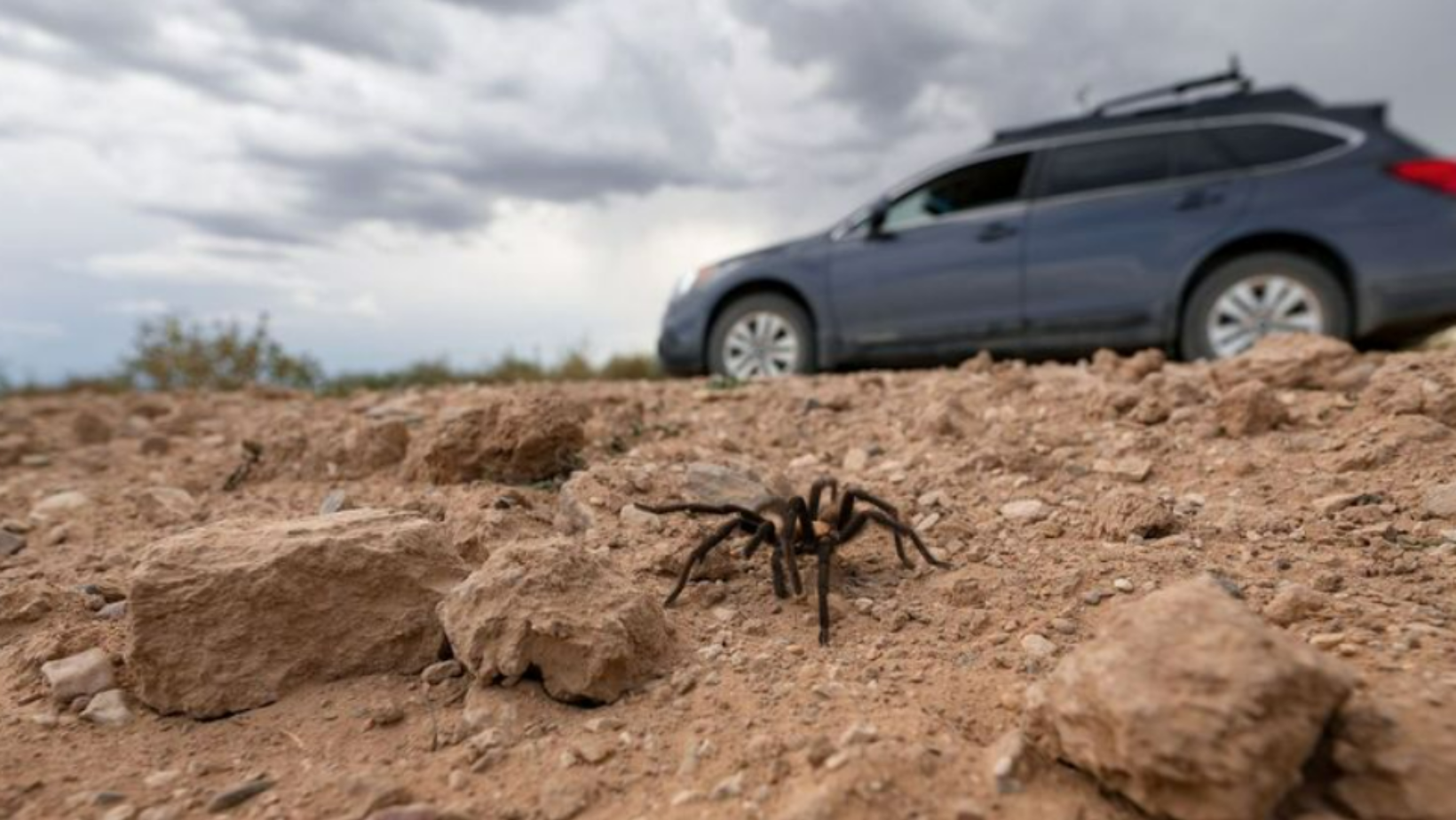
Here in Arizona, the Madrean Sky Islands make excellent tarantula biomes and for folks interested in tarantula-watching, it’s a real delight, as each sky island hosts unique species with adaptations and behaviors well suited for their respective habitat.
In the Tortolita Mountains north of Tucson, encounters with Aphonopelma chalcodes (the Arizona Blond tarantula) are common. In contrast, Aphonopelma gabeli (the Chiricahuan Gray tarantula) can be found in the Chihuahuan Desert of southeast Arizona. Near Kingman, one might come across Aphonopelma mareki. In the Tombstone area, Aphonopelma vorhiesi is a normal sight. The list goes on — Arizona boasts at least 16 unique species of native tarantula.
As my tarantula passion grew, I began to notice that my mental health was becoming more stable. The anxiety and grief I had been struggling with for years were becoming more manageable. Like a thread of silk spun from a spinnerette blowing on a gentle breeze, these difficult feelings, I now understood, contained beauty. Without sorrow, it would be hard to notice joy. And as I worked through my darkness in the company of these spiders, joy did come.
The more I entangled myself in the world of tarantulas, the more I learned about the web of spider enthusiasts celebrating arachnids around the world. I was able to speak with Ph.D. candidate Jackie Billotte about her work with tarantulas. Through Jackie, I learned about the biggest tarantula meet-up in the country: La Junta, Colorado’s Tarantula Festival, where spider friends come from near and far. I knew I had to attend!

Mural of commonly misunderstood creatures, like tarantulas, in La Junta.
Just one month after talking with Jackie, I found myself in Colorado’s eastern plains, in the Comanche National Grasslands. I was waiting for the sun to begin setting with several other folks doing the same. We’d all arrived in La Junta from different parts of the country to do the same thing: witness Aphonopelma hentzi (Texas brown tarantula) males out in large numbers on their quest for love: the mission of their life.
We watched in amazement as noticeable movement in the grasslands began and the first few tarantulas were spotted. There was joy in the air as the Tarantula Festival kicked off!
The weekend was filled with tarantula-centric fun, including a parade, a costume contest, and a whole lot of educational programming. The festival did a wonderful job of teaching visitors why tarantulas are integral to the health of our ecosystems and how gentle they truly are.
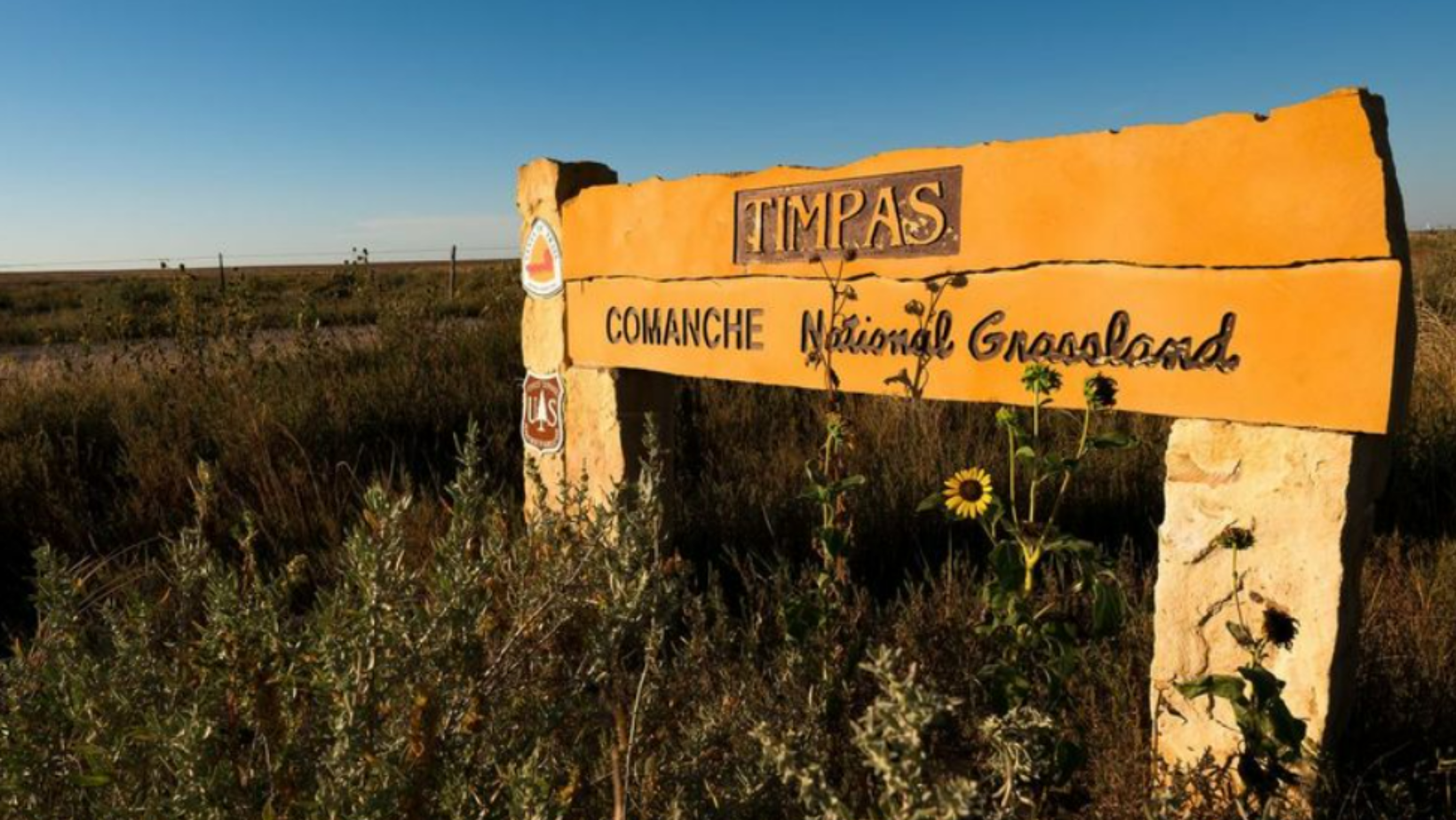
Tarantulas, and many other spiders, are excellent pest control. Think of them as your local eco-friendly exterminators! They help agriculture thrive and protect native plants from harmful bugs. Folks who fear tarantulas may be concerned with getting a venomous bite, but don’t worry about being bit by a tarantula here in the United States. All the tarantulas that call this country home would rather run away than bite. And that venom they’ve got? It doesn’t really affect humans; it’s meant to paralyze their prey, which are little bugs typically.
Like with all wildlife, tarantulas deserve respect, and handling them is not a good practice. Surprisingly, they’re extremely fragile and can become mortally wounded from even a short fall off of a human hand.
Being in the field and in town with other tarantula fans was a moment of magic for my mental health. Building a community around these spiders has given many of us a sense of belonging. Meandering around grasslands quietly…softly…as the sun sets on the eastern plains with a group of new friends helped me regain some hope I had lost over the years. We laughed together and shared passion and enthusiasm watching spiders make their final journeys. It touched me in a profound way. And I know so many other visitors felt the same.
That weekend event in La Junta brings so many folks out to support the conservation and lives of wild tarantulas that it’s caught on big time, bumping up the popularity of the Coarsegold Tarantula Awareness Festival in California! Surely more tarantula-centric events will be announced as the support for eight-legged friends grows.
In the years since my first tarantula sighting, since my quest to spider-watch began, my mental health has improved greatly, though life hasn’t become less stressful. Time with tarantulas has simply taught me to slow down and breathe. To appreciate tiny lives and small worlds.
In the company of spiders, great peace can be found. And great reverence for this precious life we are given. So the next time you spot a tarantula eight-stepping its way across a road or in your yard, pause for a moment and observe. Live and let live. You may find that moment changes your life in unforeseen ways.
.png)